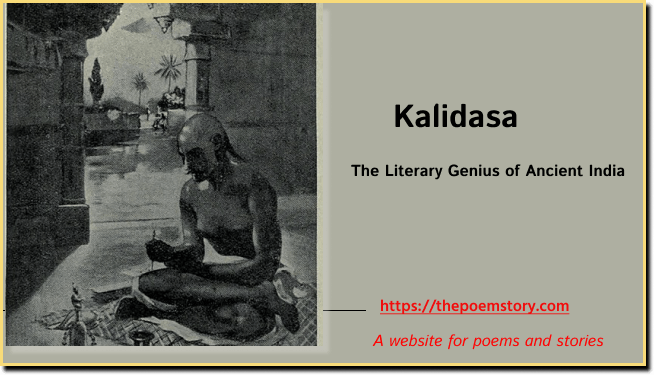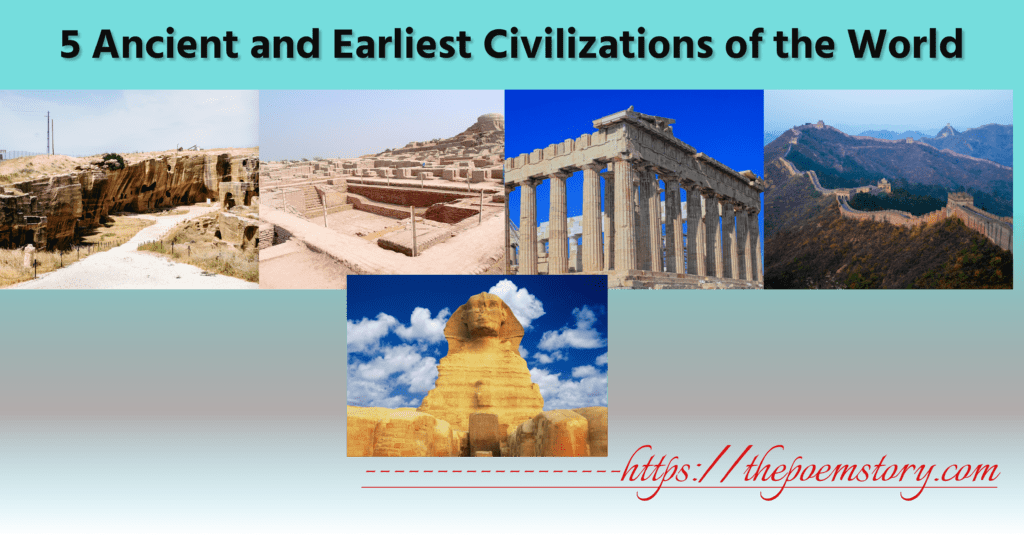
Table of Contents
Introduction
The Mauryan Empire, spanning from 322 BCE to 185 BCE, stands as one of the most significant empires in ancient Indian history. Under the leadership of Chandragupta Maurya and his successors, the empire flourished, encompassing a vast expanse of the Indian subcontinent. This article delves into the rise, governance, achievements, and legacy of the Mauryan Empire, shedding light on its political, social, and cultural impact on the region.
| Rulers Of Mauryan Empire | Period |
|---|---|
| Chandragupta | 322–297 BCE |
| Bindusara | 297–272/268 BCE |
| Ashoka | 272/268–232 BCE |
| Dasharatha | 232–224 BCE |
| Samprati | 224–215 BCE |
| Shalishuka | 215–202 BCE |
| Devavarman | 202–195 BCE |
| Shatadhanvan | 195–187 BCE |
| Brihadratha | 187–180 BCE |
We will look at 3 important rulers of the Mauryan Dynasty. Chandragupta Maurya, Bindusara, Ashoka the great.
I. Origins and Rise of the Mauryan Empire
1. Political fragmentation before the Mauryan era.
Political fragmentation characterized the Indian subcontinent before the rise of the Mauryan Empire. The region was divided into numerous small kingdoms and republics, each with its own ruling dynasty and varying degrees of power and influence. This period witnessed a complex political landscape with constant rivalries, alliances, and conflicts among the various entities.
- Magadha: Magadha emerged as one of the prominent kingdoms in ancient India during this era. It was located in the eastern part of the subcontinent and became a major political power under rulers like Bimbisara and Ajatashatru. Magadha’s strategic location and fertile lands allowed it to expand its influence and control over neighboring territories.
- Avanti: Avanti was another significant kingdom situated in the western part of present-day Madhya Pradesh. It was known for its prosperity and played an active role in regional politics. The city of Ujjayini (present-day Ujjain) served as its capital and a center of trade and commerce.
- Kalinga: Kalinga, located in present-day Odisha, was a maritime kingdom known for its maritime trade and seafaring capabilities. It had its own distinctive culture and political structure. Kalinga’s strategic coastal position made it a coveted region for control and often a battleground for rival powers.
- Taxila: Taxila, located in present-day Pakistan, was a renowned center of learning and commerce. It was ruled by various regional powers and was an important hub for trade along the Silk Road. Taxila’s intellectual and cultural vibrancy attracted scholars and merchants from different parts of the world.
- Janapadas and Republics: Apart from the major kingdoms, the Indian subcontinent was dotted with numerous Janapadas (territorial divisions) and republics. These were self-governing entities with their own political systems and administration. Some well-known republics during this period include the Shakya republic, where Gautama Buddha was born, and the Mallas, whose capital was Kusinagara.
The political landscape during this era was characterized by frequent conflicts, alliances, and power struggles among these kingdoms and republics. Diplomatic marriages, military campaigns, and strategic alliances were common strategies employed by rulers to expand their territories and increase their influence.
It was against this backdrop of political fragmentation and regional rivalries that Chandragupta Maurya emerged as a formidable force, establishing the Mauryan Empire and unifying a significant portion of the Indian subcontinent. The rise of the Mauryan Empire marked a significant shift in the political dynamics of the region, bringing about a centralized and expansive empire that would shape the course of Indian history.
2. Chandragupta Maurya: The Founder of Mauryan Empire
The rise of Chandragupta Maurya to power marks a crucial turning point in the history of ancient India. Chandragupta’s ascent involved a series of strategic moves, alliances, and military campaigns that eventually led to the establishment of the Mauryan Empire.
Chandragupta Maurya was born in a humble background, and little is known about his early life. However, his determination and ambition propelled him to seek opportunities for power and influence. It was during this time that he encountered Chanakya, also known as Kautilya or Vishnugupta, a renowned scholar and political strategist. Chanakya recognized Chandragupta’s potential and became his mentor and guide.
Under Chanakya’s guidance, Chandragupta embarked on a journey to challenge the dominant Nanda dynasty, which ruled over the kingdom of Magadha. The Nanda dynasty had established its authority over a vast region, including present-day Bihar and parts of Uttar Pradesh.
Chandragupta and Chanakya devised a meticulous plan to overthrow the Nanda dynasty. They sought support and formed alliances with other regional powers that were dissatisfied with the Nanda rule. One of the most significant alliances was forged with the ruler of Taxila, a strategic city located in present-day Pakistan. This alliance provided Chandragupta with the resources, military support, and crucial access to the northwest regions.
The combined forces of Chandragupta and his allies clashed with the Nanda army. Through a series of military campaigns and clever strategies, Chandragupta emerged victorious, overthrowing the Nanda dynasty and establishing his own rule over Magadha. This marked the beginning of the Mauryan Empire.
Chandragupta’s military successes did not end with the defeat of the Nandas. He continued to expand his empire, extending his rule over vast territories, including parts of present-day Afghanistan and Pakistan. His conquests encompassed regions such as Punjab and Sindh, solidifying the foundation of the Mauryan Empire.
To ensure the stability and efficient governance of his empire, Chandragupta implemented administrative reforms. He established a centralized bureaucracy and an elaborate system of spies and informants to maintain control and monitor the regions under his rule. Chandragupta’s governance policies focused on efficient tax collection, maintaining law and order, and fostering economic prosperity.
Chandragupta’s rise to power was not only characterized by military victories but also by his ability to inspire loyalty among his subjects. He was seen as a just and fair ruler, known for his concern for the welfare of his people.
In conclusion, Chandragupta Maurya’s rise to power was marked by strategic alliances, military conquests, and administrative reforms. His partnership with Chanakya and the overthrow of the Nanda dynasty laid the foundation for the Mauryan Empire. Chandragupta’s visionary leadership and ambition transformed him from an ambitious young man to a powerful ruler, setting the stage for the subsequent expansion and glory of the Mauryan Empire under his successors.
3. Consolidation of territories and the establishment of the empire.
After Chandragupta Maurya’s rise to power and the defeat of the Nanda dynasty, he embarked on a process of consolidating the territories under his rule, which laid the groundwork for the establishment of the Mauryan Empire. Chandragupta’s efforts focused on expanding his empire, strengthening governance structures, and implementing administrative reforms to ensure stability and efficient administration.
To consolidate his territories, Chandragupta Maurya pursued a series of military campaigns. He continued to expand his empire through conquests, defeating various regional powers and annexing their lands. The most notable of these conquests was his victory over Seleucus I Nicator, the Greek general and founder of the Seleucid Empire, who had controlled territories in present-day Afghanistan and Pakistan. The war with Seleucus resulted in a peace treaty that secured the northwestern frontier and further expanded Chandragupta’s dominion.
With the consolidation of territories, Chandragupta Maurya set about establishing a robust administrative structure. He established a centralized bureaucracy to govern the vast expanse of his empire. The bureaucracy consisted of officials who were responsible for collecting taxes, maintaining law and order, and overseeing various aspects of administration in different provinces.
To ensure efficient governance, Chandragupta introduced a system of spies and informants known as the “Amatya” network. These spies provided valuable information to the central administration about the state of affairs in different regions, aiding in the maintenance of control and swift decision-making.
Another significant aspect of Chandragupta’s consolidation efforts was the establishment of a standardized system of weights and measures. This uniform system facilitated trade and commerce within the empire, promoting economic growth and prosperity.
The capital city of Pataliputra (modern-day Patna) served as the administrative and political center of the Mauryan Empire. Chandragupta focused on developing Pataliputra, constructing palaces, public buildings, and fortifications to enhance its grandeur and security. The city became a hub of cultural exchange, attracting scholars, artists, and merchants from various regions.
Chandragupta Maurya’s consolidation efforts were not limited to military conquests and administrative reforms. He also recognized the importance of diplomacy in maintaining stability within his empire. He formed alliances with neighboring kingdoms and entered into matrimonial alliances to strengthen political ties and secure his position.
The establishment of the Mauryan Empire marked a significant shift in the political landscape of ancient India. Chandragupta’s consolidation of territories and establishment of a centralized administration set the stage for his successors, notably Ashoka the Great, to further expand the empire and leave a lasting impact on Indian history.
In conclusion, Chandragupta Maurya’s consolidation of territories and establishment of a centralized administration were crucial in the formation of the Mauryan Empire. Through military conquests, administrative reforms, and diplomatic alliances, Chandragupta laid the foundation for a unified and prosperous empire that would shape the course of Indian history for centuries to come.
4. Administrative reforms and governance by Chandragupta Maurya.
Chandragupta Maurya, the founder of the Mauryan Empire, implemented significant administrative reforms and governance policies that played a crucial role in the stability and prosperity of his empire. Recognizing the importance of efficient governance and the well-being of his subjects, Chandragupta introduced several key reforms that had a lasting impact on the administration of the Mauryan Empire.
- Centralized Bureaucracy: Chandragupta established a centralized bureaucracy to govern the vast territories under his rule. The empire was divided into provinces, with each province headed by a governor appointed by the emperor. These governors were responsible for maintaining law and order, collecting taxes, and overseeing the administration of their respective regions. This centralized administrative structure helped in effective control and governance.
- Taxation and Revenue Collection: Chandragupta implemented a systematic taxation system to ensure a steady revenue stream for the empire. Land revenue, which constituted a significant portion of the state income, was collected from agricultural lands. Chandragupta’s administration introduced a standardized system of assessing land productivity and levying taxes accordingly. This helped in the efficient collection of revenue and facilitated economic stability within the empire.
- Security and Law Enforcement: To maintain law and order, Chandragupta established a strong security apparatus. He created a specialized force known as the “Mahamatra” to maintain internal security and deal with any potential threats. Additionally, a network of spies and informants, known as the “Amatya” network, was established to gather intelligence and report on the state of affairs in different regions. This helped in identifying and addressing potential challenges to the empire’s stability.
- Administrative Reforms: Chandragupta introduced several administrative reforms aimed at improving the efficiency and effectiveness of governance. He standardized weights and measures, which facilitated trade and commerce within the empire. A system of courts and judges was established to ensure justice and fair dispute resolution. Chandragupta also paid attention to public welfare by constructing irrigation systems, improving agricultural practices, and implementing measures to alleviate poverty.
- Diplomatic Relations: Chandragupta recognized the importance of diplomacy in maintaining stability and expanding his influence. He established diplomatic relations with various regional powers and formed strategic alliances through matrimonial ties. One notable alliance was with Seleucus I Nicator, a Greek general and founder of the Seleucid Empire. The resulting peace treaty secured the northwestern frontier and further expanded Chandragupta’s dominion.
- Capital City Development: Chandragupta Maurya focused on the development and grandeur of his capital city, Pataliputra (modern-day Patna). He constructed palaces, public buildings, and fortifications, showcasing the empire’s power and magnificence. Pataliputra became a hub of political, economic, and cultural activities, attracting scholars, artists, and merchants from different regions.
Chandragupta Maurya’s administrative reforms and governance policies were aimed at establishing a well-organized and prosperous empire. His focus on centralized administration, taxation, security, judicial reforms, and diplomatic relations laid the foundation for efficient governance and contributed to the stability and success of the Mauryan Empire. Chandragupta’s administrative legacy served as a model for his successors, including the legendary Ashoka the Great, who further refined and expanded upon these reforms.
II. The Reign of Bindusara and the Empire’s Expansion
1. Timeline of Bindusara rule
Bindusara ruled the Mauryan Empire from around 297 BCE to 273 BCE. Here is a rough timeline of his reign:
- 297 BCE: Bindusara ascends the throne as the second Mauryan emperor after the abdication of his father, Chandragupta Maurya.
- 294 BCE: Bindusara dispatches his general, Subhadrangi, to conquer rebellious provinces in the Deccan region, successfully bringing them under Mauryan control.
- 290 BCE: Bindusara establishes diplomatic ties with the Hellenistic Seleucid Empire, continuing the alliance initiated by his father. The Mauryan Empire engages in cultural and trade exchanges with the Seleucids.
- 273 BCE: Bindusara passes away, and his son, Ashoka, ascends the throne as the third Mauryan emperor. Bindusara’s reign ends, and Ashoka’s transformative reign begins.
2. The Reign of Bindusara and the Empire’s Expansion
The reign of Bindusara, the son and successor of Chandragupta Maurya, witnessed further expansion and consolidation of the Mauryan Empire. Bindusara, also known as Amitraghata, continued the policies and strategies of his father, further strengthening the empire and extending its boundaries.
During Bindusara’s reign, the Mauryan Empire expanded its territorial reach through a series of military campaigns and diplomatic alliances. Bindusara’s conquests focused primarily on the southern and western regions of the Indian subcontinent.
One of the significant military expeditions undertaken during Bindusara’s reign was the annexation of the Deccan region. Bindusara dispatched his trusted general, Subhadrangi (also known as Subandhu or Subrata), to subdue the rebellious provinces in the Deccan. Subhadrangi successfully accomplished the mission and brought the region under Mauryan control.
Bindusara also maintained diplomatic relations with various foreign powers. He established friendly ties with the Hellenistic Seleucid Empire in the west, continuing the alliance initiated by his father Chandragupta. This alliance brought cultural and trade exchanges between the Mauryan Empire and the Seleucids, fostering economic growth and influencing the art and architecture of the region.
One of the most notable incidents during Bindusara’s reign was the visit of Deimachus, an ambassador from the Hellenistic ruler Antiochus I. This visit highlighted the expanding influence and prestige of the Mauryan Empire on the international stage.
Bindusara’s empire also extended its influence beyond the Indian subcontinent. According to historical accounts, he received ambassadors from the Greek ruler, Ptolemy II Philadelphus of Egypt, indicating the reach and recognition of the Mauryan Empire in far-off lands.
While Bindusara’s reign was marked by territorial expansion and diplomatic relations, his focus on maintaining internal stability and efficient governance cannot be overlooked. He continued the administrative reforms initiated by his father, Chandragupta Maurya, ensuring the smooth functioning of the bureaucracy and the collection of taxes.
Despite his military successes and contributions to the empire’s expansion, Bindusara’s reign is relatively less documented compared to his father and his renowned son, Ashoka the Great. However, his role in consolidating the empire and preserving the legacy of the Mauryan dynasty cannot be underestimated.
Bindusara’s reign set the stage for the reign of his son, Ashoka, who would later emerge as one of the most influential and transformative rulers in Indian history. Ashoka’s accomplishments and his conversion to Buddhism would shape the trajectory of the Mauryan Empire and its impact on society.
In conclusion, Bindusara’s reign marked a period of expansion and consolidation for the Mauryan Empire. Through military campaigns and diplomatic alliances, he extended the empire’s territories and maintained friendly relations with foreign powers. Bindusara’s reign laid the foundation for the remarkable reign of his son, Ashoka the Great, who would take the empire to new heights of prominence and influence.
During Bindusara’s rule, the Mauryan Empire witnessed effective administration and governance, building upon the foundations laid by his father, Chandragupta Maurya. Bindusara continued the administrative reforms implemented by Chandragupta, focusing on maintaining stability, expanding the empire, and ensuring efficient governance.
III. The reign of Ashoka the great

The reign of Ashoka the Great, also known as Ashoka Maurya, marked a significant turning point in the history of the Mauryan Empire and had a lasting impact on the Indian subcontinent. Ashoka’s rule, which lasted from approximately 268 BCE to 232 BCE, is renowned for his transformation from a ruthless conqueror to a compassionate and enlightened ruler. Here is an overview of the key aspects and achievements of Ashoka’s reign:
1. Early Reign and Military Conquests:
Ashoka inherited a vast empire from his father, Bindusara, and initially continued the policy of territorial expansion through military campaigns. He successfully conquered the kingdom of Kalinga (modern-day Odisha), which proved to be a turning point in his life and reign.
2. Kalinga War and Change of Heart
The brutal and devastating Kalinga War in 261 BCE deeply impacted Ashoka. Witnessing the immense suffering and loss of life caused by the war, he underwent a profound change of heart and embraced the principles of non-violence, compassion, and moral responsibility. This transformative experience led him to adopt the principles of Buddhism and promote Dharma (righteousness) as the guiding force of his rule.
3. Adoption of Buddhism
Ashoka’s conversion to Buddhism had a profound impact on his reign. He became a devout Buddhist and implemented policies inspired by Buddhist teachings. He propagated the principles of Ahimsa (non-violence), Dhamma (righteousness), and Karuna (compassion) throughout his empire.
4. Edicts and Pillars
Ashoka disseminated his policies and principles through rock edicts and pillars erected throughout his empire. These inscriptions, written in various regional languages and scripts, addressed a wide range of topics, including moral conduct, social welfare, religious tolerance, and administration. The edicts reflect Ashoka’s emphasis on promoting social harmony, ethical governance, and the welfare of his subjects.
5. Social and Welfare Reforms
Ashoka implemented numerous welfare measures aimed at improving the lives of his subjects. He promoted public health by establishing hospitals and dispensaries, built wells and rest houses along trade routes, and supported the planting of trees for environmental conservation. Ashoka also implemented policies to alleviate poverty, protect animal welfare, and support the rights and welfare of prisoners.
6. Spread of Buddhism:
Ashoka played a pivotal role in the spread of Buddhism beyond the Indian subcontinent. He sent Buddhist missions to neighboring kingdoms and regions, including Sri Lanka, Southeast Asia, and Central Asia, contributing to the global expansion of Buddhism. Ashoka’s efforts in promoting Buddhism helped establish it as a major world religion.
7. Administrative and Judicial Reforms
Ashoka introduced administrative and judicial reforms to ensure efficient governance and uphold justice. He appointed Dharma Mahamatras (officials of righteousness) to oversee the administration and monitor the implementation of his policies. Ashoka’s administration focused on impartial justice, good governance, and providing access to justice for all.
8. Legacy and Impact
Ashoka’s reign left a lasting impact on Indian history and society. His principles of non-violence, compassion, and moral responsibility influenced the subsequent development of Indian philosophy, ethics, and governance. Ashoka’s rock edicts and pillars continue to serve as important historical and philosophical documents.
Ashoka’s reign is considered a significant period of socio-political and cultural transformation. His embrace of Buddhism, promotion of welfare measures, and pursuit of ethical governance made him one of the most revered and influential figures in Indian history.
IV. Cultural and Social Aspects
1. Art, Architecture, and Urban Planning:
Art, architecture, and urban planning flourished during the Mauryan rule, leaving a significant legacy that influenced subsequent architectural and artistic developments in the Indian subcontinent. The Mauryan Empire, under the patronage of rulers like Chandragupta Maurya, Bindusara, and Ashoka the Great, witnessed the construction of grand structures and the development of distinctive artistic styles. Here are some key aspects of art, architecture, and urban planning during the Mauryan period:
- Pillars and Capitals: One of the iconic features of Mauryan architecture is the use of polished sandstone pillars. These pillars, typically monolithic and highly polished, were adorned with intricate carvings. The most famous of these pillars is the Ashoka Pillar at Sarnath, which features four lions atop a bell-shaped capital. The Ashoka Pillar became the national emblem of India and symbolizes Ashoka’s association with Buddhism.
- Stupas and Buddhist Monuments: The Mauryan era witnessed the rise of Buddhist architecture, with the construction of stupas (hemispherical structures containing relics) and Buddhist monasteries. The Great Stupa at Sanchi, commissioned by Ashoka, is one of the most important examples of Mauryan architecture. It features a massive dome, ornate gateways (toranas), and intricate carvings depicting scenes from the life of the Buddha.
- Palace and Fort Architecture: The Mauryan rulers constructed palaces and forts, although very few remnants of these structures survive today. The palace of Chandragupta Maurya in Pataliputra (modern-day Patna) is believed to have been a magnificent structure with multiple stories and intricate designs. The fortifications of the Mauryan capital, including massive walls and gateways, showcased the grandeur and military might of the empire.
- Urban Planning and Infrastructure: The Mauryan rulers paid attention to urban planning and the development of cities. Pataliputra, the capital of the Mauryan Empire, was a well-planned city with well-organized streets, water supply systems, and public buildings. The city featured separate residential and commercial areas, palaces, gardens, and public spaces. The meticulous planning and organization of Pataliputra became a model for future urban developments in the region.
- Rock-Cut Architecture: Although not as prominent as in later periods, rock-cut architecture had its beginnings during the Mauryan era. Examples include the Barabar Caves in Bihar, which were carved out of granite and used as retreats for ascetics. These caves exhibit simple yet elegant architectural forms and served as important religious and spiritual sites.
- Artistic Expressions: Mauryan art is characterized by a blend of indigenous and Hellenistic influences. The carvings and sculptures of the period depict various themes, including religious motifs, court scenes, animal figures, and floral patterns. The art is marked by a sense of realism, with attention to detail and a focus on naturalistic representations.
- Material and Techniques: The Mauryan architects and artisans employed various materials and techniques in their constructions and artworks. Stone, particularly polished sandstone, was widely used for pillars, sculptures, and architectural elements. The artisans used carving, relief work, and sculpting techniques to create intricate and finely detailed artworks.
The art, architecture, and urban planning during the Mauryan rule laid the foundation for subsequent architectural and artistic developments in the Indian subcontinent. The monumental structures, artistic expressions, and city planning of this period reflect the grandeur, innovation, and cultural richness of the Mauryan Empire.
2. Education and Intellectual Development:
During the Mauryan Empire, education and intellectual development flourished, contributing to the growth of knowledge and scholarship. The Mauryan rulers, particularly Ashoka the Great, recognized the importance of education and patronized centers of learning. Here are some key aspects of education and intellectual development during the Mauryan era:
- Universities and Educational Institutions: The Mauryan Empire saw the establishment of renowned centers of learning and universities. The most prominent among them was the University of Taxila (located in present-day Pakistan), which attracted scholars from various parts of the world. Taxila became a major hub of education and intellectual exchange, offering courses in various disciplines such as philosophy, mathematics, medicine, and astronomy.
- Scholarship and Learning: The Mauryan period witnessed a vibrant intellectual culture with scholars engaged in research, intellectual debates, and the pursuit of knowledge. The universities and educational institutions provided a conducive environment for scholars to explore different fields of study, exchange ideas, and engage in intellectual discussions.
- Languages and Literature: The Mauryan era witnessed a rich literary tradition, with scholars writing in various languages, including Sanskrit, Prakrit, and Pali. Literature flourished in different forms such as poetry, prose, and drama. Scholars composed works on a wide range of subjects, including philosophy, ethics, science, and history.
- Royal Patronage: The Mauryan rulers played an instrumental role in promoting education and intellectual pursuits. They provided patronage and support to scholars, encouraging the development of intellectual activities. Ashoka the Great, in particular, is known for his patronage of Buddhist scholars and the dissemination of Buddhist teachings through inscriptions and missions.
- Buddhist Scholarship: Buddhism played a significant role in intellectual development during the Mauryan period. Buddhist monastic institutions served as centers of learning, where monks and scholars engaged in the study of Buddhist philosophy, scriptures, and commentaries. Ashoka sponsored the compilation and preservation of Buddhist texts, contributing to the intellectual growth of Buddhism.
- Knowledge Exchange and International Connections: The Mauryan Empire had extensive connections with other regions, facilitating the exchange of knowledge and ideas. Scholars from different parts of the world, including Greece and Persia, visited centers of learning in the Mauryan Empire, contributing to the cross-pollination of ideas and intellectual growth.
- Scientific and Technological Advancements: During the Mauryan era, scientific and technological advancements were made in fields such as astronomy, mathematics, and medicine. Scholars studied celestial bodies, developed mathematical concepts, and made progress in medical treatments and surgical techniques.
- Educational Curriculum: The curriculum in Mauryan educational institutions covered a wide range of subjects. Students were exposed to subjects like philosophy, ethics, mathematics, astronomy, medicine, political science, and literature. The aim was to provide a comprehensive education that fostered critical thinking, moral values, and practical knowledge.
Education and intellectual development during the Mauryan Empire played a crucial role in shaping the intellectual landscape of ancient India. The patronage of rulers, the establishment of universities, and the exchange of ideas among scholars contributed to advancements in knowledge, literature, and various academic disciplines. The intellectual achievements of this period laid a strong foundation for future scholarly endeavors in the Indian subcontinent.
3. Society and Social Structure
The society and social structure of the Mauryan Empire were influenced by various factors, including the prevailing social norms, religious beliefs, and administrative policies. Here are some key aspects of the society and social structure during the Mauryan era:
Caste System and Social Hierarchy:
The caste system was an integral part of the social structure in ancient India, including during the Mauryan Empire. The caste system divided society into hierarchical groups based on occupation and not birth. At the top were the Brahmins (priests and scholars), followed by the Kshatriyas (warriors and rulers), Vaishyas (merchants and farmers), and Shudras (laborers and servants).
Religion and Social Life:
Religion played a significant role in the social life of Mauryan society. Hinduism, with its rituals and practices, influenced the social fabric, while Buddhism gained prominence during Ashoka’s reign. Both religions offered moral and ethical guidelines for societal interactions. The growth of Buddhism provided opportunities for social mobility, as individuals from various social backgrounds, including women, could join monastic orders.
Rural and Urban Divide
The Mauryan Empire encompassed both rural and urban areas, and there was a noticeable divide between these regions. The majority of the population lived in rural areas, engaged in agriculture and animal husbandry. Urban centers like Pataliputra (the capital) were more cosmopolitan, hosting a diverse population engaged in trade, administration, and craftsmanship. The urban centers provided opportunities for social and cultural interactions, contributing to the social fabric of the empire.
Role of Women
During the Mauryan Empire, women played significant roles in various spheres of society. While the position and roles of women varied based on social class, regional customs, and personal circumstances, they made valuable contributions to the empire. Here are some aspects highlighting the role of women during the Mauryan era:
- Empress and Queens: The Mauryan Empire saw the participation of influential women in positions of power. Queens and empresses held considerable sway and played crucial roles in political affairs. They provided support and counsel to the kings, and their involvement in decision-making processes was recognized and respected.
- Royal Court and Administration: Women from royal families often held important positions in the royal court and administration. They acted as advisors, managed the royal household, and oversaw the welfare and education of the royal children. Their influence extended to matters of governance and policy formulation.
- Economic Activities: Women in the Mauryan Empire actively participated in economic activities. They engaged in trade, agriculture, and various crafts. Women from lower social classes often worked as laborers in fields and industries, contributing to the economic prosperity of the empire.
- Education and Learning: While education was widespread during that time, women from elite families and women willing to learn, received education and intellectual training. They had access to knowledge in fields such as philosophy, literature, and the arts. Queens and princesses often patronized and supported centers of learning and scholarship.
- Religious and Spiritual Roles: Women had an active presence in religious and spiritual activities. They participated in rituals, ceremonies, and religious festivals. Mauryan society witnessed the rise of Buddhism, and women played significant roles as nuns, offering spiritual guidance and support.
- Maternal and Domestic Roles: Women in the Mauryan Empire were primarily responsible for managing households and raising children. They played crucial roles in shaping the values, ethics, and cultural traditions within the family unit. The stability of the family and the passing down of heritage were largely dependent on their nurturing and guidance.
V. Legacy and Decline
1. Legacy of the Mauryan Empire:
The Mauryan Empire left a lasting legacy that had a profound impact on ancient Indian history. Here are some key aspects of the empire’s legacy:
- Political Centralization: The Mauryan Empire’s establishment marked a significant shift from fragmented political entities to a centralized imperial rule. Chandragupta Maurya’s administrative reforms and Ashoka’s governance set a precedent for future rulers, laying the foundation for centralized states in India.
- Efficient Administration: The Mauryan Empire introduced administrative systems that improved governance and facilitated efficient rule. The empire was divided into provinces (Janapadas) and further into districts (Vishayas), each with appointed officials responsible for administration and tax collection. The efficient bureaucracy and infrastructure set the stage for subsequent administrations.
- Ashoka’s Dharma: Emperor Ashoka’s conversion to Buddhism and his propagation of the principles of dharma (moral righteousness) had a profound impact on religious and social discourse. Ashoka’s rock and pillar edicts, promoting ethical conduct, social welfare, and religious tolerance, left a lasting impression on subsequent rulers and influenced the development of Buddhism in India and beyond.
- Spread of Buddhism: Ashoka played a vital role in the spread of Buddhism, not only within India but also to other parts of Asia. He sent emissaries and missionaries to neighboring regions, promoting Buddhist teachings and establishing monastic centers. This contributed to the growth and dissemination of Buddhism, making it a global religion.
- Architectural and Artistic Marvels: The Mauryan Empire witnessed remarkable advancements in art and architecture. The famous Ashoka Pillars, adorned with inscriptions and intricate carvings, stand as a testament to the empire’s artistic achievements. Mauryan architecture, characterized by polished stone structures, pillars, and stupas, influenced subsequent architectural styles in India.
- Trade and Economic Prosperity: The Mauryan Empire fostered trade and commerce, leading to economic prosperity. The establishment of a well-connected road network, including the famous Grand Trunk Road, facilitated trade across the empire. The empire’s control over key trade routes brought economic benefits and cultural exchanges with neighboring regions.
- Literary Contributions: The Mauryan period witnessed significant literary advancements. The compilation of Arthashastra by Chanakya (also known as Kautilya), the chief advisor to Chandragupta Maurya, remains a valuable treatise on politics, governance, and economics. The works of scholars like Chanakya and other contemporary writers enriched ancient Indian literature.
- Influence on Subsequent Empires: The Mauryan Empire’s political, administrative, and cultural achievements influenced later Indian empires and states. The principles of centralized rule, ethical governance, and religious tolerance set by the Mauryas served as a model for subsequent dynasties, including the Gupta Empire and various regional powers.
The legacy of the Mauryan Empire continues to resonate in Indian history and has left a lasting imprint on various aspects of governance, religion, art, literature, and culture. The empire’s achievements and contributions have shaped the trajectory of ancient India and left an indelible mark on the collective memory of the subcontinent.
2. Factors Leading to the Decline:
The decline of the Mauryan Empire, which once stood as a powerful and prosperous entity, can be attributed to several factors. Here are some key factors that contributed to its downfall:
- Succession Issues: The Mauryan Empire faced challenges related to succession after Ashoka’s death. The subsequent rulers lacked the same level of leadership and authority, leading to weak and ineffective governance. The absence of a strong and capable ruler resulted in political instability and internal conflicts.
- Economic Drain: The large-scale military campaigns of Ashoka and his predecessors, although expanding the empire’s territories, put a significant strain on the economy. The costs of maintaining a vast empire, including military expenses, administration, and welfare projects, led to economic exhaustion. The empire faced financial difficulties, leading to economic decline and weakened infrastructure.
- Regional Revolts and Internal Unrest: The vastness of the Mauryan Empire made it challenging to maintain control over distant provinces. Regional revolts and uprisings erupted in different parts of the empire, indicating a growing discontent among local rulers and populations. The lack of effective centralized control further fueled these revolts, ultimately weakening the empire.
- Administrative Issues: The administrative structure of the Mauryan Empire, while initially efficient, faced challenges over time. Corruption and bureaucracy plagued the administration, leading to inefficiency and mismanagement. The empire struggled to effectively govern its vast territories, resulting in administrative breakdown and loss of control.
- External Invasions: The Mauryan Empire faced external threats and invasions during its later years. The northwest frontier, in particular, witnessed incursions by foreign powers such as the Greeks, Bactrians, and the Seleucid Empire. These invasions further strained the empire’s resources and weakened its hold on those regions.
- Religious and Social Changes: The decline of Buddhism as the dominant religion in India also had an impact on the Mauryan Empire. After Ashoka, subsequent rulers did not actively promote Buddhism, and religious and cultural changes occurred within the empire. The rise of Brahmanical Hinduism and other belief systems led to shifting dynamics and potentially contributed to social and political unrest.
It is important to note that the decline of the Mauryan Empire was a complex process influenced by multiple factors occurring over an extended period. While the empire eventually fragmented, it left a lasting impact on Indian history and laid the groundwork for subsequent regional powers and empires in the subcontinent.
3. Aftermath and Historical Significance:
The Mauryan Empire, despite its eventual decline, left a significant aftermath and historical significance that shaped the course of Indian history. Here are some key aspects of the aftermath and historical significance of the Mauryan Empire:
- Regional Kingdoms: Following the disintegration of the Mauryan Empire, various regional kingdoms emerged across the Indian subcontinent. These kingdoms, such as the Shunga, Satavahana, and Kushan dynasties, filled the power vacuum and ruled over smaller territories. They drew upon elements of Mauryan administration and governance while developing their distinct regional identities.
- Spread of Buddhism: One of the most enduring legacies of the Mauryan Empire was the widespread dissemination of Buddhism. Emperor Ashoka’s conversion to Buddhism and his efforts to promote the religion left a lasting impact. Buddhist missionaries were sent to neighboring regions, contributing to the growth of Buddhism in areas such as Sri Lanka, Southeast Asia, and Central Asia.
- Art and Architecture: Mauryan art and architecture made lasting contributions to Indian culture. The monumental Ashoka Pillars, adorned with intricate carvings and inscriptions, stand as architectural marvels. The use of polished stone, city planning, and the construction of large stupas influenced subsequent architectural styles in India. Mauryan art also reflected a blend of indigenous and foreign artistic influences.
- Ashoka’s Dharma: Emperor Ashoka’s espousal of dharma, emphasizing moral conduct and social welfare, had a profound impact on subsequent rulers and the development of ethical frameworks in Indian society. His rock and pillar edicts served as moral and legal guidelines, advocating non-violence, religious tolerance, and social justice.
- Historical Documentation: The Mauryan Empire played a crucial role in the documentation of ancient Indian history. Ashoka’s rock and pillar edicts, inscribed in various parts of the empire, provide invaluable insights into the political, social, and religious aspects of the time. Literary works such as the Arthashastra by Chanakya also shed light on the administrative and political systems of the empire.
- Influence on Subsequent Empires: The administrative, political, and cultural practices of the Mauryan Empire had a profound influence on subsequent empires and states in Indian history. The concepts of centralized rule, bureaucratic administration, and ethical governance laid the foundation for future dynasties, such as the Gupta Empire, which drew inspiration from Mauryan precedents.
- Historical Memory: The Mauryan Empire occupies a prominent place in the collective memory and historical consciousness of India. Its grandeur, achievements, and the reign of Emperor Ashoka continue to captivate imaginations and inspire discussions on governance, ethics, and the interplay between religion and state power.
The Mauryan Empire’s aftermath and historical significance extend beyond its duration, shaping the socio-political, religious, and artistic landscapes of ancient India. The empire’s influence continues to resonate, providing valuable insights into the complexities of ancient Indian history and serving as a reminder of the enduring legacy of the Mauryan period.
Conclusion
The Mauryan Empire, which spanned from approximately 322 BCE to 185 BCE, holds great significance in the history of ancient India. It emerged as a powerful and centralized empire, under the leadership of notable rulers such as Chandragupta Maurya and Ashoka the Great. Despite its eventual decline, the Mauryan Empire left a lasting legacy that shaped the course of Indian history.
The empire’s administrative and governance reforms set a precedent for centralized rule and efficient administration. The influence of Chanakya’s Arthashastra and Ashoka’s principles of dharma laid the foundation for ethical governance and moral conduct. The Mauryan Empire’s influence extended to the spread of Buddhism, with Ashoka’s conversion and the subsequent propagation of the religion across India and beyond.
The Mauryan Empire’s contributions to art, architecture, and urban planning are evident in the magnificent Ashoka Pillars, the polished stone structures, and the development of well-connected road networks. These achievements continue to inspire admiration for the empire’s artistic and architectural prowess.
Additionally, the Mauryan Empire’s influence can be seen in the regional kingdoms that emerged after its decline. The empire’s fragmentation led to the rise of smaller dynasties, which drew upon Mauryan administrative practices while developing their distinct regional identities.
The Mauryan Empire’s historical significance lies in its enduring impact on Indian culture, governance, religion, and historical documentation. It left a profound legacy that influenced subsequent empires and shaped the collective memory of ancient India. The empire’s achievements and contributions continue to be studied and appreciated as vital components of India’s rich historical tapestry.
In conclusion, the Mauryan Empire stands as a remarkable period in Indian history, marked by centralization, cultural flourishing, and the propagation of Buddhism. Its rise, consolidation, and eventual decline provide valuable insights into the complexities of ancient Indian civilization and serve as a testament to the empire’s enduring significance.
===========================
Read about Ashoka the Great
===========================
Our YouTube Channel: ThePoemStory – Meditation and Spirituality









